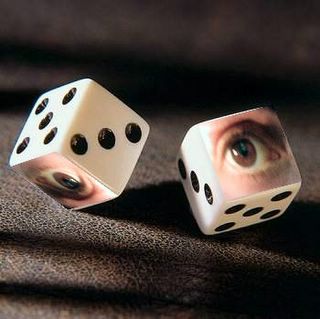Wednesday, September 26, 2012
Family Game Showcase: The Settlers of Catan
Last month, I told you a bit about my history and how I got involved in the boardgaming community. This time, I'd like to tell you more about the game that got me hooked, Settlers of Catan.
Settlers of Catan is a German board game for 3 or 4 players, designed by Klaus Teuber, and first published in 1995, as Die Siedler von Catan. Since that time, it has sold over 15 million copies, in 30 languages. In this game, players take on the role of settlers, taming the frontier of the island of Catan, building settlements, roads, and cities, while avoiding the attentions of the bandits that roam the land.
The board is made up of hexagonal tiles representing different types of land, which each produce a single type of resource. There is also a desert tile, which produces nothing, where the bandit figure begins. Finally, port tiles are placed along the shore, relating to the trading part of the game. Numbered markers control the actual production of resources, when the dice are rolled.
Your goal is to be the first player to reach 10 victory points. These are gained through placing settlements, upgrading to cities, building monuments with development cards, or through two special tiles each worth two points, which go to whomever currently has the longest road or the largest army.
Your playing pieces include settlements, cities, and roads in your color. Initially, everyone places two settlements on the board, each with a road. There are some restrictions on placement, but that's more rules detail than needed here.
On your turn, you will first roll two dice to see which resources are produced. All players with a settlement bordering a tile with a matching total gain a resource card according to the type of tile. If a 7 is rolled, the bandits attack, shutting down production, and stealing resources. This encourages players to use their resources, rather than hoarding them. Once everyone has gained (or lost) resources, players may trade them.
In the trading phase, the current player can trade with the other players, or the board, at different exchange rates, depending on whether or not you control a port, which reduces the cost to get a different resource. After trading, next is building.
In the building phase, you turn resources into the bank to build roads, settlements, or cities, or to buy development cards (monuments, soldiers, or other special cards). Each player has a tile showing costs. After you have built everything you plan to, give the dice to the next player, and it is now their turn.
While Settlers initially seems complicated, most players catch on after a few turns. The theme works very well. At the beginning of the game, you will struggle to build, but later, cities and settlements will be producing plenty, and you will begin concentrating on getting more points.
To learn more about and play this and many other games, contact me at gamerseye@swbell.net.
Subscribe to:
Post Comments (Atom)


No comments:
Post a Comment